RUNECOIN
Cena RSIC•GENESIS•RUNE
$0,00049864
+$0,000014901
(+3,08 %)
Změna ceny za posledních 24 hodin

Jak se bude podle vašeho pocitu dnes vyvíjet RUNECOIN?
Podělte se zde o své pocity tím, že dáte palec nahoru, pokud u coinu čekáte býčí trend, nebo palec dolů, pokud čekáte medvědí trend.
Hlasujte, aby se zobrazily výsledky
Zřeknutí se odpovědnosti
Obsah sociálních sítí (dále jen „obsah“) včetně mj. tweetů a statistik poskytovaných službou LunarCrush, pochází od třetích stran a poskytuje se „tak jak je“ jen pro informativní účely. Společnost OKX nezaručuje kvalitu tohoto obsahu a tento obsah nepředstavuje názory společnosti OKX. Není zamýšlen jako (i) investiční poradenství či doporučení, (ii) nabídka či výzva k nákupu, prodeji či držení digitálních aktiv ani (iii) investiční, daňové nebo právní poradenství. Digitální aktiva, včetně stablecoinů a tokenů NFT, s sebou nesou vysoký stupeň rizika a jejich hodnota může výrazně kolísat. Jejich cena ani výkonnost není zaručena a mohou se bez předchozího upozornění změnit.Společnost OKX neposkytuje investiční doporučení ani doporučení ohledně aktiv. Měli byste pečlivě zvážit, zda jsou pro vás obchodování či držba digitálních aktiv s ohledem na vaši finanční situaci vhodné. Otázky týkající se vaší konkrétní situace prosím zkonzultujte se svým právním/daňovým/investičním poradcem. Pro další podrobnosti si prosím projděte podmínky použití a varování před rizikem společnosti OKX. Použitím webu třetí strany (dále jen „web třetí strany“) souhlasíte s tím, že veškeré použití tohoto webu podléhá jeho podmínkám a řídí se jimi. Není-li výslovně a písemně uvedeno jinak, nemá společnost OKX ani její afilace (dále jen „společnost OKX“) žádnou vazbu s vlastníkem či provozovatelem webu třetí strany. Vyjadřujete souhlas s tím, že společnost OKX neodpovídá za žádné ztráty, škody ani jiné následky plynoucí z vašeho použití webu třetí strany. Mějte prosím na paměti, že použití webu třetí strany může vést ke ztrátě nebo poklesu vašich aktiv. Produkt nemusí být dostupný ve všech jurisdikcích.
Informace o trhu RSIC•GENESIS•RUNE
Tržní kap.
Tržní kapitalizace se vypočítá vynásobením zásoby coinu v oběhu a poslední ceny aktiva.
Tržní kapitalizace = objem v oběhu × poslední cena
Tržní kapitalizace = objem v oběhu × poslední cena
Objem v oběhu
Celkový objem coinu, který je veřejně dostupný na trhu.
Hodnocení podle tržní kapitalizace
Pořadí coinu z hlediska hodnoty tržní kapitalizace
Historické maximum
Nejvyšší cena, kterou coin dosáhl během své historie obchodování
Historické minimum
Nejnižší cena, kterou coin dosáhl během své historie obchodování
Tržní kap.
$0,00
Objem v oběhu
0 RUNECOIN
0,00 % dokladu
21 000 000 000 RUNECOIN
Hodnocení podle tržní kapitalizace
--
Audity

Poslední audit: --
Maximum za 24 h
$0,00052874
Minimum za 24 h
$0,00047204
Historické maximum
$0,016880
-97,05 % (-$0,01638)
Naposledy aktualizováno: 5. 5. 2024
Historické minimum
$0,00035230
+41,53 % (+$0,00014634)
Naposledy aktualizováno: 7. 4. 2025
Pohyby ceny RSIC•GENESIS•RUNE v USD
Aktuální cena kryptoměny RSIC•GENESIS•RUNE je $0,00049864. U kryptoměny RSIC•GENESIS•RUNE došlo za posledních 24 hodin k pohybu zvýšení o +3,08 %. Její aktuální zásoba v oběhu je 0 RUNECOIN a maximální zásoba je 21 000 000 000 RUNECOIN, což jí zajišťuje plně zředěnou tržní kapitalizaci na úrovni $0,00. V současnosti je coin RSIC•GENESIS•RUNE na 0. místě v pořadí podle tržní kapitalizace. Cena RSIC•GENESIS•RUNE/USD se aktualizuje v reálném čase.
Dnes
+$0,000014901
+3,08 %
7 dní
+$0,000050440
+11,25 %
30 dní
-$0,00021
-29,90 %
3 měsíce
-$0,00078
-60,87 %
Populární směny u RSIC•GENESIS•RUNE
Naposledy aktualizováno: 24. 04. 2025 18:52
Informace o měně RSIC•GENESIS•RUNE (RUNECOIN)
- Oficiální web
- Block explorer
O externích webech
O externích webech
Použitím webu třetí strany (dále jen „web třetí strany“) souhlasíte s tím, že veškeré použití tohoto webu podléhá jeho podmínkám a řídí se jimi. Není-li výslovně a písemně uvedeno jinak, nemá společnost OKX ani její afilace (dále jen „společnost OKX“) žádnou vazbu s vlastníkem či provozovatelem webu třetí strany. Vyjadřujete souhlas s tím, že společnost OKX neodpovídá za žádné ztráty, škody ani jiné následky plynoucí z vašeho použití webu třetí strany. Mějte prosím na paměti, že použití webu třetí strany může vést ke ztrátě nebo poklesu vašich aktiv.
RSIC•GENESIS•RUNE – nejčastější dotazy
Jakou hodnotu má dnes 1 RSIC•GENESIS•RUNE?
V současné době má 1 RSIC•GENESIS•RUNE hodnotu $0,00049864. Pokud chcete získat odpovědi a vhled do vývoje ceny RSIC•GENESIS•RUNE, jste na správném místě. Prozkoumejte nejnovější grafy pro RSIC•GENESIS•RUNE a obchodujte zodpovědně s OKX.
Co je kryptoměna?
Kryptoměny, jako je RSIC•GENESIS•RUNE, jsou digitální aktiva, která fungují na veřejném ledgeru nazývaném blockchain. Seznamte se blíže s coiny a tokeny nabízenými na OKX a s jejich různými atributy, což zahrnuje i živé ceny a grafy v reálném čase.
Kdy byla kryptoměna vynalezena?
Díky finanční krizi v roce 2008 prudce vzrostl zájem o decentralizované finance. Bitcoin nabídl novátorské řešení tím, že představuje zabezpečené digitální aktivum na decentralizované síti. Od té doby vzniklo mnoho dalších tokenů, jako je RSIC•GENESIS•RUNE.
Vzroste dnes cena měny RSIC•GENESIS•RUNE?
Zkontrolujte si prognózu budoucích cen na naší stránce pro předpovídání cen RSIC•GENESIS•RUNE a stanovte své cenové cíle.
Zřeknutí se odpovědnosti
Obsah sociálních sítí (dále jen „obsah“) včetně mj. tweetů a statistik poskytovaných službou LunarCrush, pochází od třetích stran a poskytuje se „tak jak je“ jen pro informativní účely. Společnost OKX nezaručuje kvalitu tohoto obsahu a tento obsah nepředstavuje názory společnosti OKX. Není zamýšlen jako (i) investiční poradenství či doporučení, (ii) nabídka či výzva k nákupu, prodeji či držení digitálních aktiv ani (iii) investiční, daňové nebo právní poradenství. Digitální aktiva, včetně stablecoinů a tokenů NFT, s sebou nesou vysoký stupeň rizika a jejich hodnota může výrazně kolísat. Jejich cena ani výkonnost není zaručena a mohou se bez předchozího upozornění změnit.Společnost OKX neposkytuje investiční doporučení ani doporučení ohledně aktiv. Měli byste pečlivě zvážit, zda jsou pro vás obchodování či držba digitálních aktiv s ohledem na vaši finanční situaci vhodné. Otázky týkající se vaší konkrétní situace prosím zkonzultujte se svým právním/daňovým/investičním poradcem. Pro další podrobnosti si prosím projděte podmínky použití a varování před rizikem společnosti OKX. Použitím webu třetí strany (dále jen „web třetí strany“) souhlasíte s tím, že veškeré použití tohoto webu podléhá jeho podmínkám a řídí se jimi. Není-li výslovně a písemně uvedeno jinak, nemá společnost OKX ani její afilace (dále jen „společnost OKX“) žádnou vazbu s vlastníkem či provozovatelem webu třetí strany. Vyjadřujete souhlas s tím, že společnost OKX neodpovídá za žádné ztráty, škody ani jiné následky plynoucí z vašeho použití webu třetí strany. Mějte prosím na paměti, že použití webu třetí strany může vést ke ztrátě nebo poklesu vašich aktiv. Produkt nemusí být dostupný ve všech jurisdikcích.











